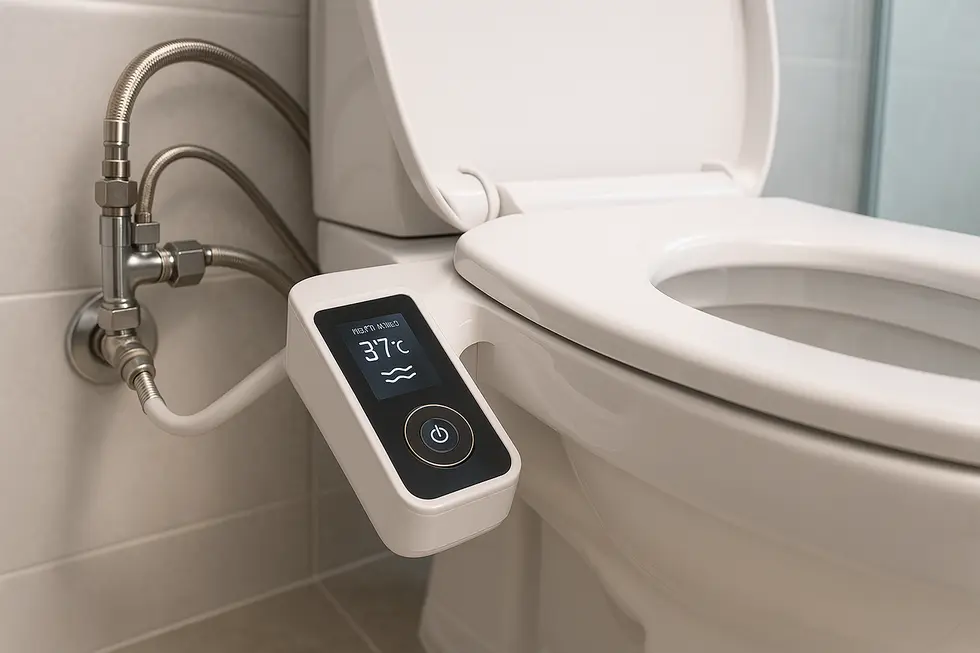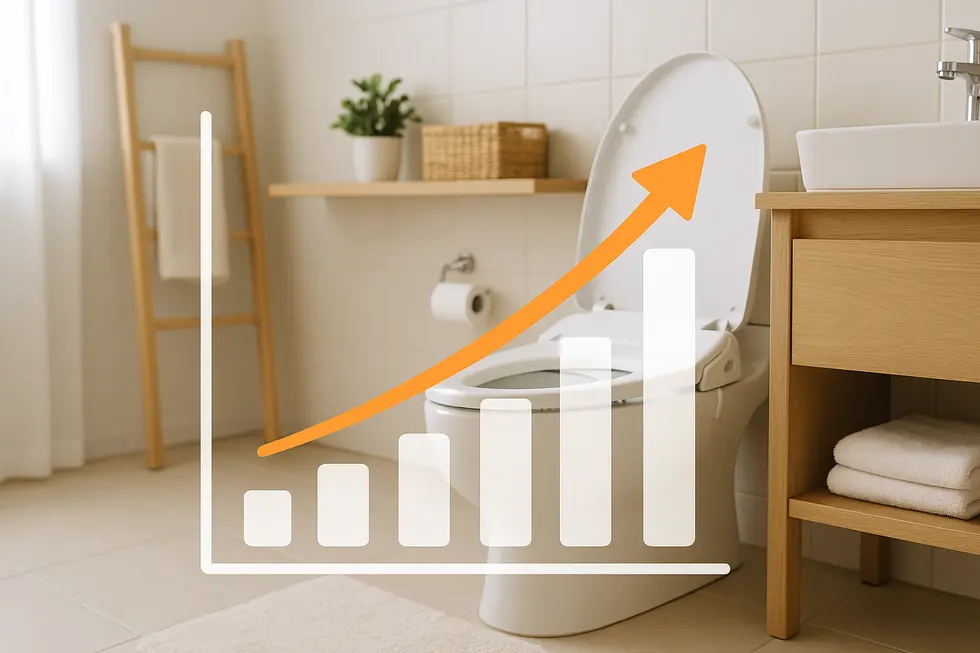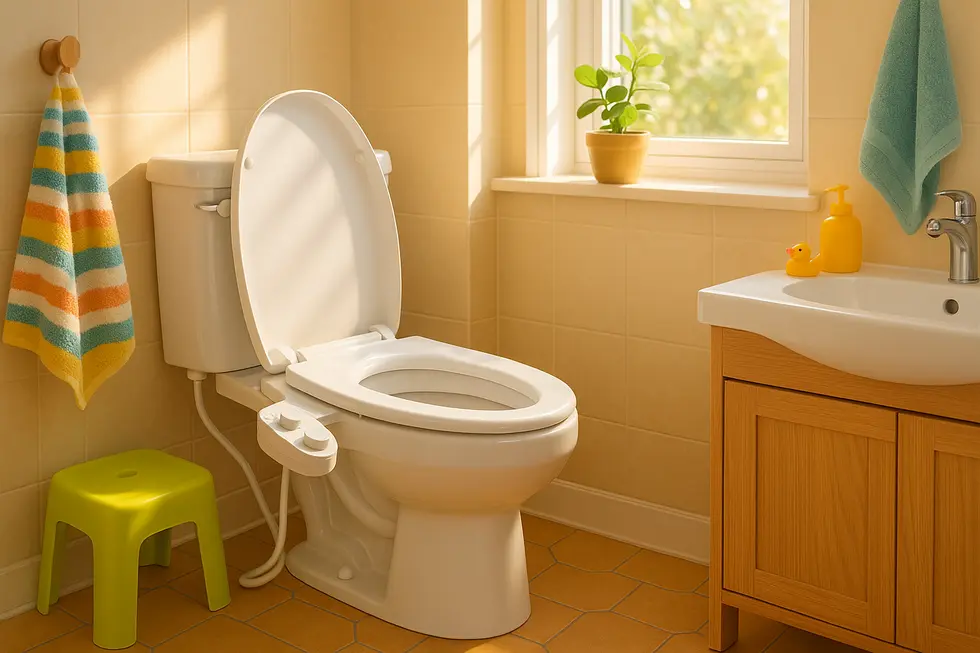Bidet Attachment
Warm Water Bidet Attachments: Embracing Comfort and Sustainability in Family Bathrooms
Bidet attachments providing warm water functionality represent a confluence of comfort, technology, and sustainability. As families increasingly prioritize hygiene, ease of use, and eco-friendly choices, understanding the advancements in these innovations becomes integral. Each chapter will guide you through this landscape—from technological advancements enhancing user experience to market dynamics that make bidet attachment warm water solutions accessible, concluding with their societal and environmental implications.
From Instant Heat to Self-Cleaning Nozzles: How Warm-Water Bidet Attachments Became Smart, Efficient, and Accessible

Modern warm-water bidet attachments have transformed the bathroom from a chilly pit stop into a spa-like sanctuary. At the heart of this shift sits instant-heating technology. Instead of storing a small tank of tepid water, contemporary models use compact ceramic or carbon heaters that warm each droplet as it passes through. The result is an endless stream of comfortable water without standby energy loss or the awkward lag that once plagued earlier units. Users simply twist a dial or tap a remote and enjoy temperature ranges fine-tuned to a single degree.
For households that prefer to stay unplugged, plumbing-integrated solutions now route the toilet’s cold feed together with the sink’s hot line, delivering warmth through pure water pressure alone. Installation rarely requires more than a T-valve and a length of braided hose; details are outlined in this concise family guide to non-electric warm-water attachments. These mechanical designs underscore a larger trend: innovation is not limited to electronics, but to thoughtful engineering that respects budgets and older bathrooms.
Comfort, however, means little without hygiene. Advances in retractable, stainless-steel nozzles ensure that the spray tip hides behind a guard gate until water pressure pushes it forward. Between uses, integrated self-rinsing cycles bathe the nozzle in warm water, reducing bacterial growth and cutting manual cleaning time dramatically. Multi-orifice tips now switch patterns on demand, offering gentle feminine sprays, wider rear washes, or a concentrated stream for post-workout grime—all adjustable with fingertip pressure control.
Sustainability benefits follow naturally. A precise warm rinse replaces handfuls of paper; manufacturers estimate households save hundreds of rolls annually while lowering sewer-system strain. Because instant heaters draw power only when activated, annual electricity consumption often equals that of a night-light. Even premium attachments have fallen into the mainstream price bracket as economies of scale kick in, bringing luxury features such as heated seats, night illumination, and quiet warm-air dryers to renters and homeowners alike.
Continuous refinement—smaller heating elements, smarter temperature sensors, and water-saving spray algorithms—promises that tomorrow’s bidet will deliver greater comfort with an even lighter environmental footprint.
From Niche Gadget to Bathroom Staple: How Warm-Water Bidet Attachments Are Reshaping the Hygiene Economy

Only a few years ago, a bidet attachment that supplied warm water felt like a luxury imported from high-tech hotels. Today it sits at the centre of a booming hygiene economy that analysts project will swell the global smart-toilet sector from roughly $8.5 billion in 2025 to more than $24 billion by 2032, a robust 13 % CAGR. Warm-water washing earns a prominent slice of that growth because it adds tangible comfort without demanding a full bathroom remodel, allowing consumers to upgrade gradually.
Within the wider market, attachable seats and slimline valve units occupy an intriguing middle ground. They borrow comfort cues—temperature control, adjustable spray—from premium smart toilets, yet remain far cheaper and install with only a wrench and a T-valve. This affordability explains why the attachment segment, valued near $180 million in 2023, is predicted to almost double before 2030. Households that hesitate at four-figure smart-toilet prices welcome a sub-$150 entry point, particularly when it pairs clean-water technology with lower paper use and, therefore, lower long-term costs.
Macroeconomic drivers reinforce demand. Aging populations prize the gentle warmth that eases joint mobility, while younger, sustainability-minded buyers appreciate reduced paper waste. Post-pandemic hygiene awareness continues to spur adoption in North America, a region that once viewed bidets as exotic. Retailers have responded by widening shelf space and emphasising easy installation; guides such as where to buy a toilet bidet attachment in America consistently rank among the most-read resources on bathroom upgrades.
Technological innovation further tilts the economics. Instant ceramic heaters minimise standby power draw, making electric models cheaper to operate, while dual-line non-electric versions leverage existing hot-water plumbing to deliver warmth without adding to the energy bill. Both approaches reduce barriers created by bathroom outlet placement—a historic pain point—and broaden the potential customer base.
Challenges remain: some households still lack electrical access near the toilet, and regions unfamiliar with bidets require consumer education. Yet manufacturers counter with app integration, voice control, and sleek profiles that blend with contemporary décor, signalling that warm-water attachments are moving from curiosity to default. For investors, retailers, and homeowners alike, the message is clear: the economics of comfort, hygiene, and sustainability have aligned, and the market is only warming up. (Source: Global Smart Toilet Market Report, Market Research Intellect – https://www.marketresearchintellect.com/report/global-smart-toilet-market)
From Paper Waste to Water Wisdom: How Warm-Water Bidet Attachments Reshape Hygiene and the Planet

Switching from stacks of toilet paper to a bidet attachment warm water model seems like a small bathroom upgrade, yet the ripple effects touch global forests, municipal water systems, and even public health. A single roll of paper requires roughly 37 gallons of water and valuable pulp; multiply that by the 57 sheets an average user pulls each day and the hidden environmental cost becomes startling. Because a bidet spray uses about 0.17 gallons per cleansing, households that embrace warm water washing can dramatically slash overall water footprints while saving tens of thousands of sheets annually.
The savings extend beyond natural resources. Fewer paper purchases translate into lower household spending and reduced demand on supply chains that rely on bleaching chemicals, plastic packaging, and diesel transport. Warm-water models reinforce these gains by improving comfort, encouraging consistent adoption across age groups. People managing hemorrhoids, postpartum recovery, or limited mobility often find the gentle heat soothing and less abrasive than dry wiping. Health professionals now cite bidets as a preventive tool against skin irritation and urinary tract issues—evidence echoed by the data compiled in this overview of bidet attachment warm water benefits.
Societally, the shift fosters inclusivity. Adjustable temperature and pressure controls allow every family member, from toddlers to elders, to customise cleansing without assistance. In densely populated cities where bathroom footprints are tight, an attachment solves hygiene and sustainability challenges without demanding extra floor space or complex plumbing refits.
Cultural perception is evolving too. Regions that once viewed bidets as niche luxuries now frame them as pragmatic eco-upgrades aligned with broader zero-waste goals. Early adopters often share energy-saving statistics or calculate yearly paper reductions, turning personal practice into community advocacy. Retailers and builders have noticed, integrating warm-water hookups in renovation templates and marketing lower utility bills as an everyday benefit.
Ultimately, the widespread adoption of warm-water bidet attachments demonstrates that comfort and conservation are not opposing forces. By replacing disposable paper habits with a controllable, efficient water stream, users model a hygienic routine that lightens ecological impact while raising living standards—an outcome any sustainability initiative strives to achieve. For a deeper look at the health dimension of this green choice, see the external analysis on long-term wellness benefits.
Final thoughts
The journey through the landscape of warm water bidet attachments reveals a perfect harmony between comfort, family needs, and eco-conscious living. As this technology continues to evolve, its adoption reflects a broader social shift towards sustainable and user-centered bathroom solutions. Families exploring these options are not only investing in enhanced personal hygiene and comfort but also supporting a greener planet.
Experience a new standard of clean with PEGABidet—designed for comfort, safety, and independence. Join thousands who trust us to make personal care simple and dignified. Contact us contact@pegabidet.com
About us
PEGABidet is a brand owned by L.A NEXTGEN LLC, based in California. We design intuitive, hygienic, and accessible bathroom solutions that prioritize safety, dignity, and independence. Our mission is to make personal care effortless and empowering for people at every stage of life.

